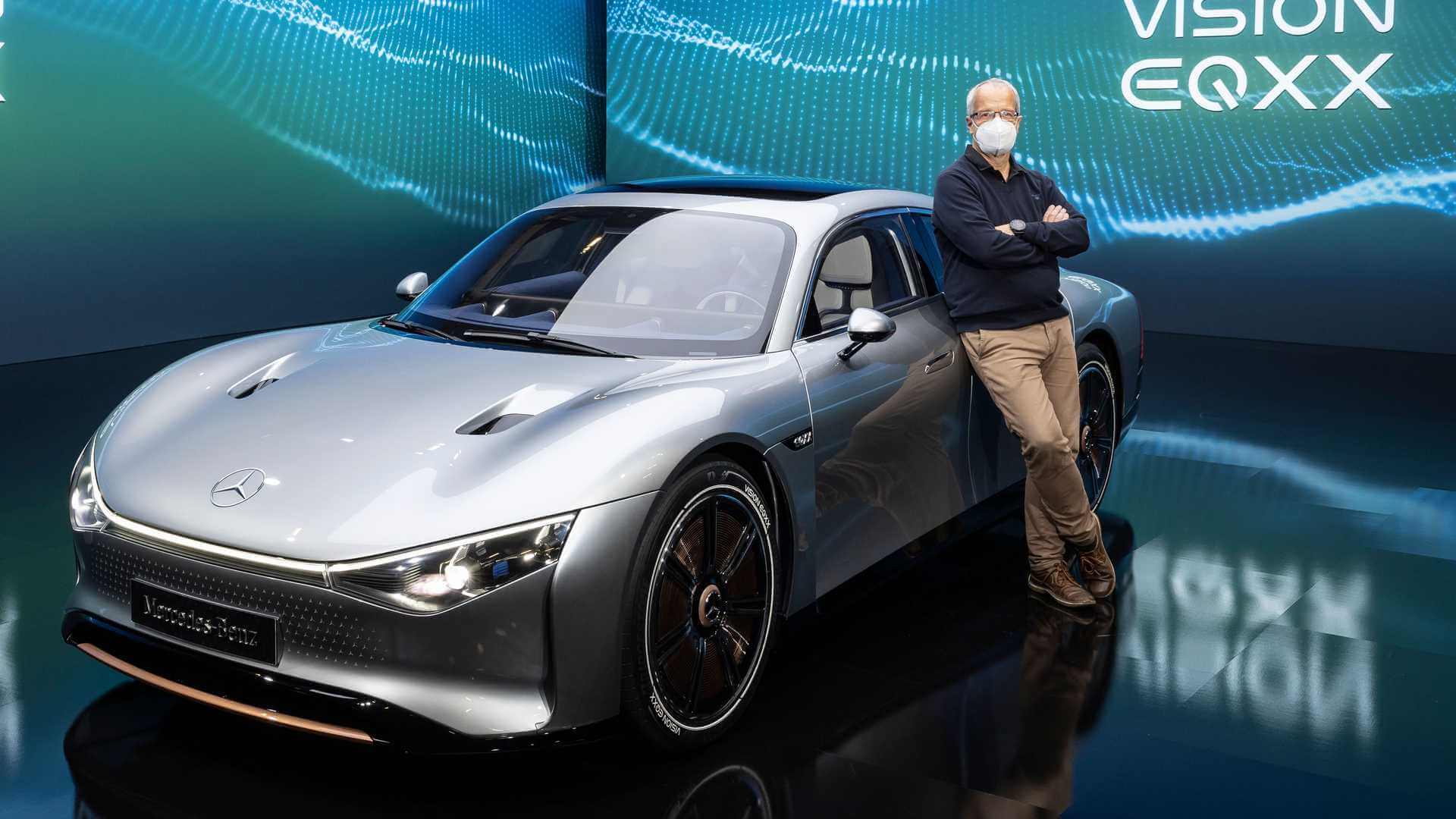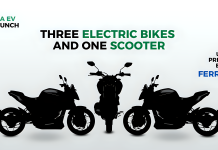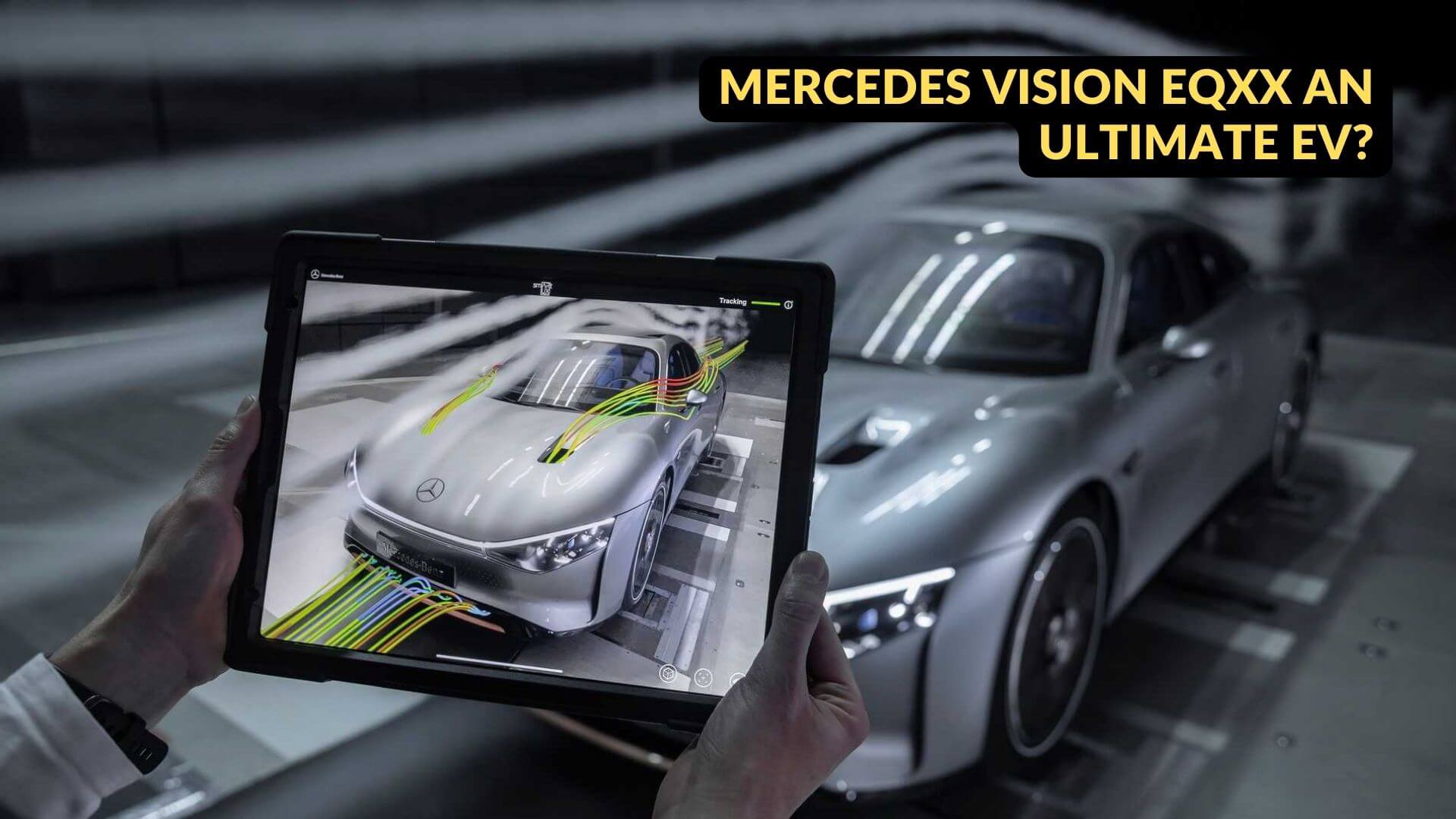
Table of Contents
Mercedes Vision EQXX
Mercedes Benz, in the past two years, has shown their intention towards an all-new and improved line of Electric vehicles following their goal of “All-Electric” by 2030.
Based on this goal, they released Vision EQXX – despite being a concept electric car, raised eyebrows as its an advancement to its EQS segment of EVs and the major talking point being their 1000km range in one full charge alongside the role of its Formula AMG-F1 and EQ Formula E’s contribution to the execution of this concept.
Let’s take a look at the perspectives that illustrate the importance of the concept that makes the Mercedes Vision EQXX the ultimate electric car? Which will shape and drive their future electric vehicles.
1. Aerodynamic Improvement
The first thing that stood out was the greater emphasis on aerodynamics. The car’s design is the acknowledgment of the impact of aerodynamics on the efficiency of an Electric vehicle.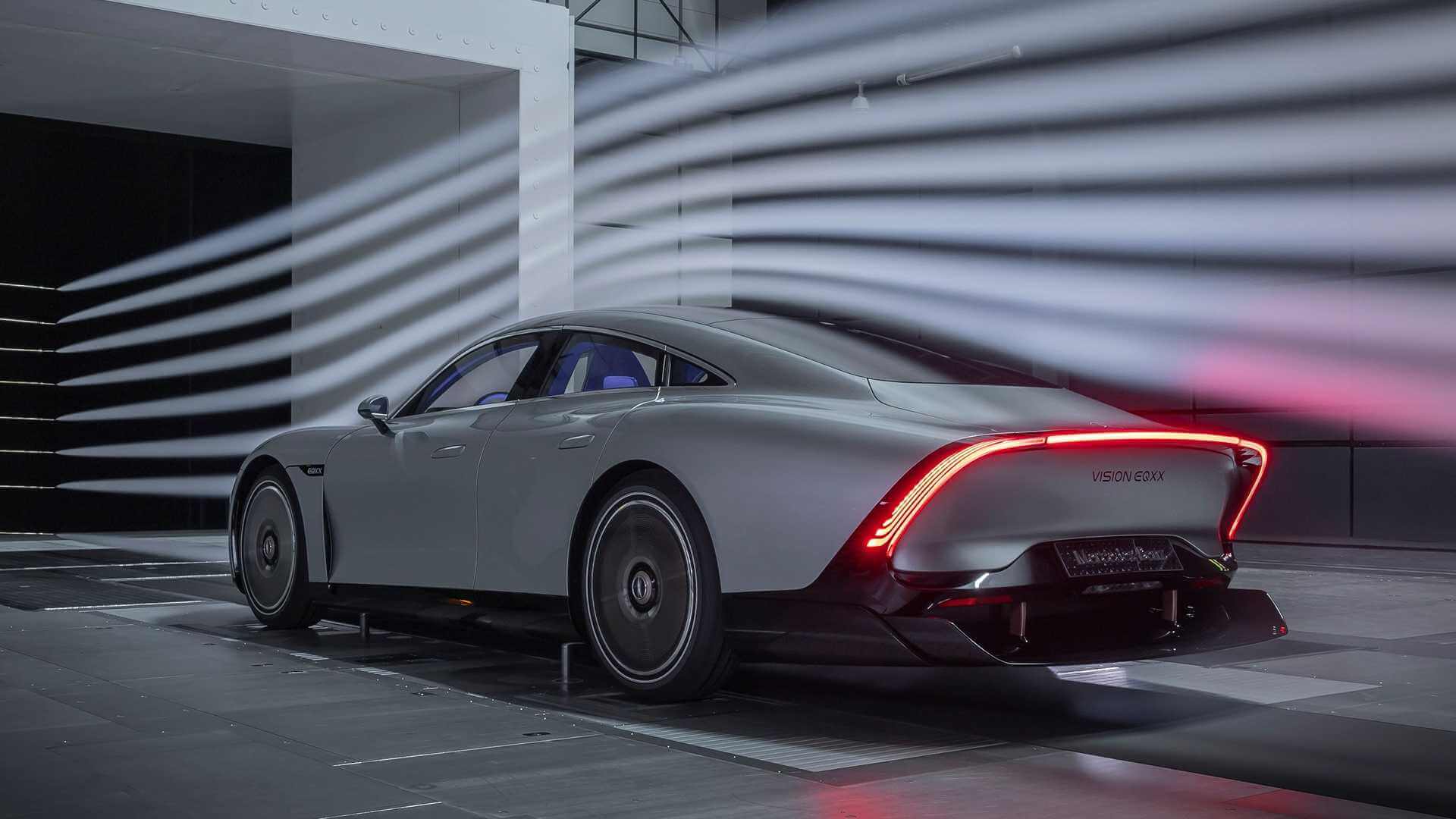
Although aerodynamics has a direct impact on the efficiency of an EV – whether its performance or range is not a new concept, it was actually first shown in the BMW i8 – plug-in hybrid and vision of the best-selling Tesla Model 3. proved that aerodynamics has a direct and long-lasting effect on the range in two forms, long distances with significantly lower kWh battery packs.
While the i8 and Tesla Model 3 have a drag coefficient of 0.23 and 0.26, respectively, the vision EQXX has a coefficient of 0.17, which further enhances performance conditions such as acceleration, top speed, stability at high speeds, and vehicle range.
All these outputs are the combined effort of Mercedes Benz’s R&D and their performance counterparts in F1 and Formula-E with their Computational Fluid dynamics studies and performance enhancement through virtual Wind tunnels and Aerodynamics studies from their teams worldwide.
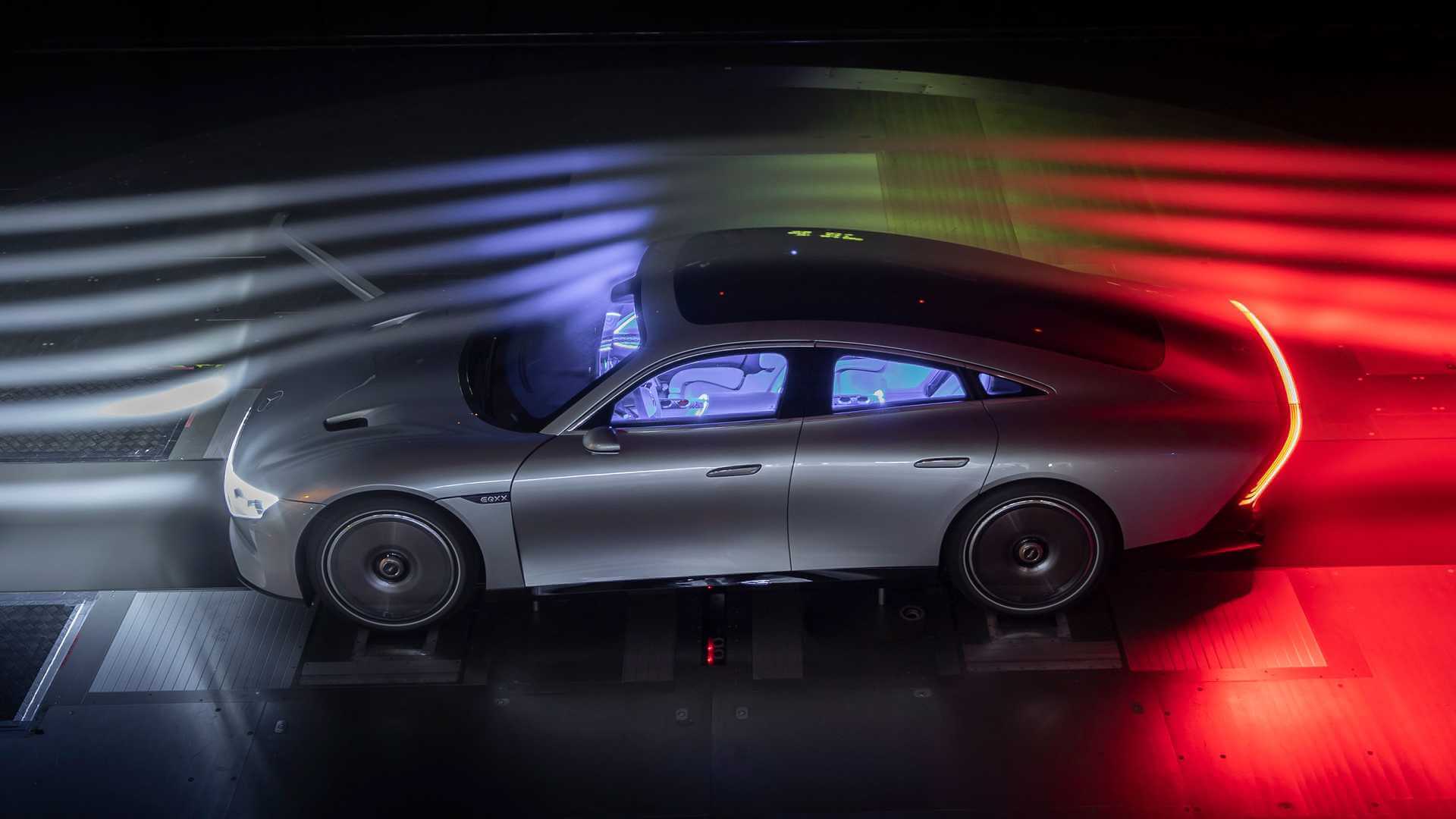
One of the reasons why the aerodynamics has a direct impact is unlike an IC engine where the drag (the force acting opposite to the motion of the vehicle) is compensated by the higher power and torque from an ICE and working on aerodynamically correct design is not economical due to the investments in Engine development.
As there’s no ICE in an EV, there’s no additional power, the impact of drag is higher, and streamlined design paves an essential work in both EV and HEVs. That’s why the development of an EV involves lowered drag coefficient vehicles.
2. Vision EQXX Battery and Range
The major talking point for EQXX was the 1000km range which is almost twice that of their EQS whose range is approximately 550 km. The battery consumption is designed to give less than 10kWh for 100 km with reduced size and weight for maximizing efficiency.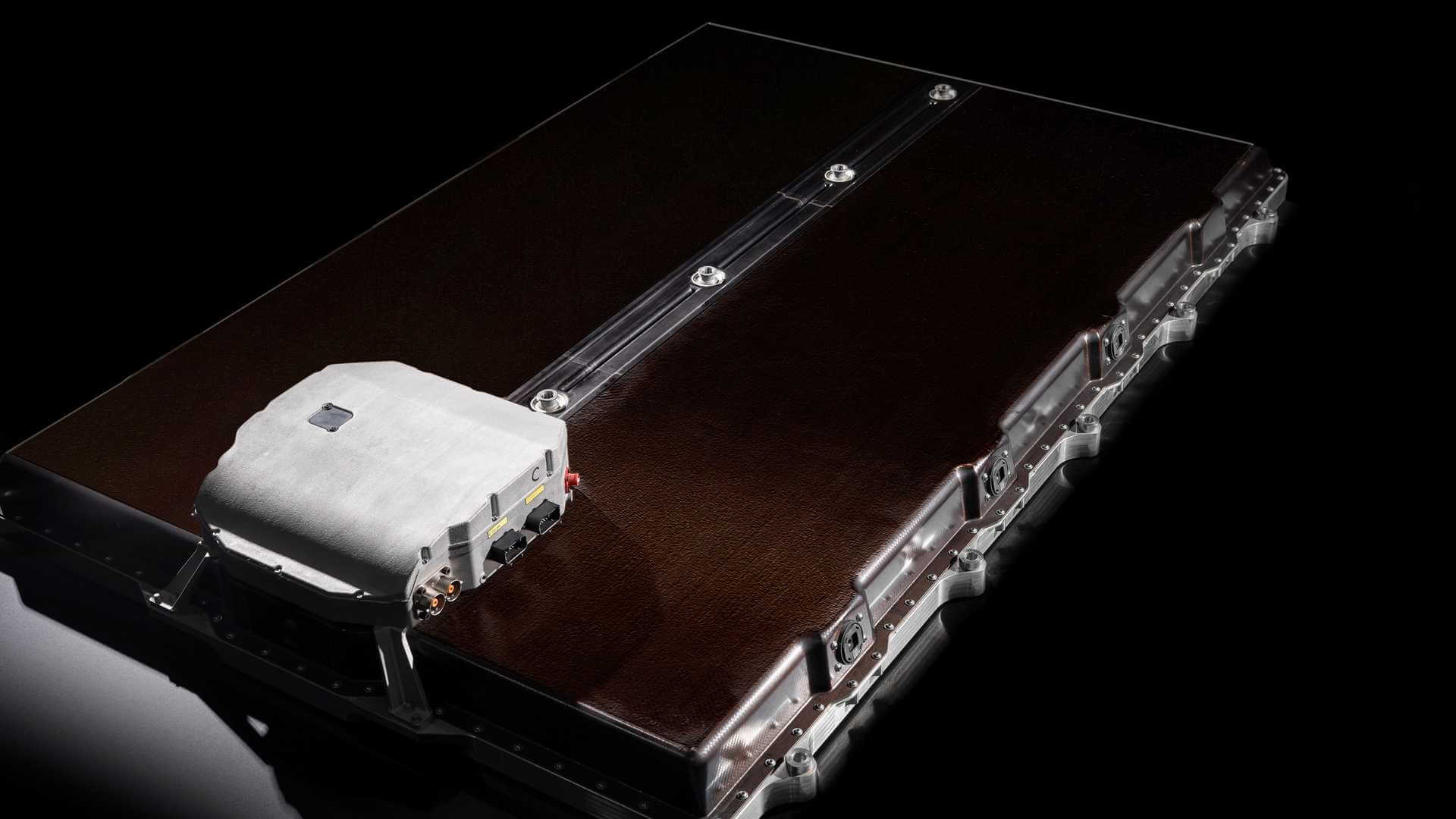
The efficiency is improved by the installation of 110 solar panels on the roof, which will automatically enhance the range without compromising the size of the battery. Combining regenerative braking, this range can be achieved as a combination of the above developments.
3. Braking Technology
The brake discs are made of aluminum which is similar to those of Composite brake discs in F1. Although not as efficient as F1s, these lightweight discs reduce the body’s overall weight with higher temperature and wear resistance.
Inducting Formula E technologies will also improve braking efficiency through regenerative braking, which will once again increase the vehicle’s range. The brake disc weighs one-third of current cast-iron discs as seen in the majority of the vehicles, and also reduces energy loss due to heat.
4. NVH (Acoustics)
The first change in improving the energy efficiency was to impart the NVH technologies from Formula E.
To improve both the driver’s efficiency and reduction of energy consumption on the cockpit, the stereo and speakers are designed to be closer to occupants not just to keep them steady but to reduce the distance sound travels thereby there would be no loss of sound energy through waves bouncing on the wall of the vehicle and also the introduction to sound zones in EV will also give feedback to drivers – a derivation from “cues” of Formula E.
Apart from that, the Drag coefficient was calculated using their aeroacoustic wind tunnel which absorbs the noise produced during air/fluid flow proving maximum efficiency.
5. Low Roll Resistance tires
Like the case of drag, the roll created during the movement of a car will impact efficiency. The EVs are 20-30% heavier than ICEs due to the battery pack, and that increase in gross weight will increase the torque required to move.
Alongside torque, the impact of weight also reduces the durability with a 20% greater wear life. Studies also showed the increased Co2 emissions due to tires, and all these factors just impart both sustainable vision and the driving point range.
Current EV tires are almost 15% heavier than ICE vehicles, and due to the larger weight, the friction during movement or tire contact on the ground is increased, thereby increasing the “rolling resistance” of the vehicle.
Also, the rims contribute to the weight and decrease range and efficiency; thus, Mercedes Vision EQXX shows the need to low roll resistance tires and magnesium rims to lower weight and drag resistance to improve efficiency. Also, lower drag-resistant tires are made of silicon, with shallow designs that improve vehicle traction in both wet and dry conditions.
6. Other Developmental cues to maximize energy efficiency
The development was to maximize efficiency, and Mercedes Vision EQXX and the future derived from this concept will get a full power train with 95% efficiency. Called “Electric drive,” this concept was a combined effort of imparting Formula 1 chassis with an eye on EV that was developed through Formula E, and this efficiency is of an ICE whose efficiency is only 30%.
Apart from the above improvements, the concept of the electric car also delved into other efficiency packages such as
- Reduced Gross vehicle weight from the current 2500kg to approximately 1750 kg
- Manufacturing efficiency – using sustainable materials as a goal for a cleaner environment and to increase the use of technologies such as 3d print for faster production.


